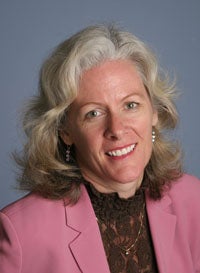Minnesota seniors deserve a plan this time
Published 10:07 am Thursday, September 9, 2010
Gayle Kvenvold and Patti Cullen, Guest Column
Minnesotans often disagree on policy issues and we certainly expect our gubernatorial candidates to do so, too. But there is one area on which they all can agree: Minnesota’s aging demographic is the biggest issue facing our state.
Each of the major party candidates has articulated some plan to address the coming age wave. We have been introduced to ideas such as a cabinet-level department of aging and disabilities, a special focus on seniors within the lieutenant governor’s office, increasing the state’s investment in home and community-based services and protecting funding for nursing homes.
While these are all excellent ideas, there are four key principles that cannot be left aside during the election debate.
First, give families choices: One key cost-saving opportunity is to keep our grandparents and parents in whatever setting they consider home for as long as possible. Our state has led the country in providing flexible options for seniors and their families, allowing them to make the right choice for their needs.
Unfortunately, Minnesota has retreated from some of this progress in recent years by drastically cutting rates for seniors in congregate housing, commonly known as assisted living. Seniors in assisted living receive care in their own apartments — their homes — giving them another choice for aging in place. The next governor must re-commit the state by supporting this vital service for older adults.
Second, invest in jobs: Services for aging adults support more than 112,000 jobs and will continue to expand, which means additional jobs in every corner of Minnesota. From nurses and nurse aides to food service and construction, investing more in caring for older adults means quality, stable jobs in Minnesota communities.
We must also honor the service of those who have cared for seniors. Over the past eight years these caregivers have made sacrifices through a reduction in hours, benefits, and wages. The next governor must provide a wage increase to these skilled workers, many of whom have seen 24 months without a pay raise and are losing benefits like health insurance and retirement plans in order to keep the doors open.
Third, keep our promises: Our state owes much to older adults. We have a long-standing commitment to honor the contributions they have made to this state by providing local access to high-quality care. However, since 2000, 57 nursing homes have closed in Minnesota and many more are in financial trouble. Voters, workers and family members who care for aging Minnesotans need to remind candidates at all levels of office that this promise — access to high-quality care — must be a priority.
Fourth, change the way Minnesotans pay for long-term care: The growth in our state’s health and human services budget is partially due to our aging population. That growth will only be slowed if Minnesotans fundamentally change the way they finance their long-term care needs.
Earlier this year, the federal government made some progress toward this end with the passage of the CLASS Act (Community Living Assistance Services and Supports Act), but more can and should be done to ensure that individuals are planning and saving for their own long-term care needs. The next governor should explore incentives that will assist individuals. These incentives range from making long-term care insurance more affordable and accessible to allowing seniors who can pay for their care to do so.
In this way, Minnesota can invest in a strong public safety net for those who need it without sacrificing quality care, and more Minnesotans will be able to remain financially independent for a longer period of time.
It is exciting to see all of our candidates for governor focusing on Minnesota’s older adults. We urge all of the candidates to carefully consider these four key principles for older adult services in Minnesota, both during and after the election season, and we urge voters to remind all candidates how important this issue is for them.
Gayle Kvenvold is the president and CEO of Aging Services of Minnesota. Patti Cullen is the president and CEO of Care Providers of Minnesota. The Long-Term Care Imperative is a legislative collaboration between Care Providers of Minnesota and Aging Services of Minnesota, the state’s two long-term care member associations.



